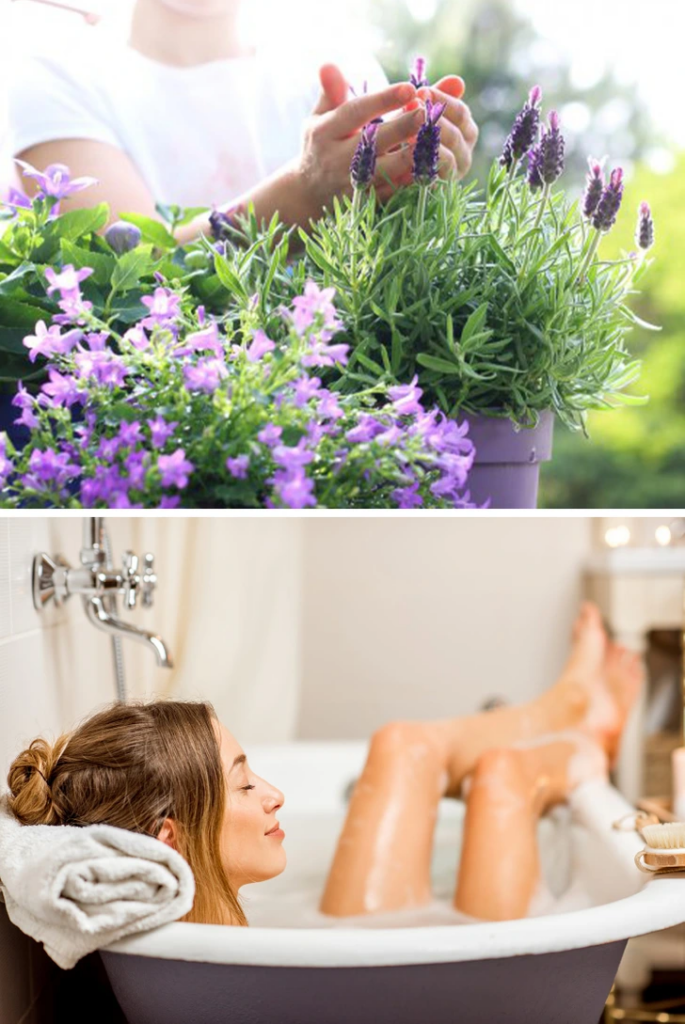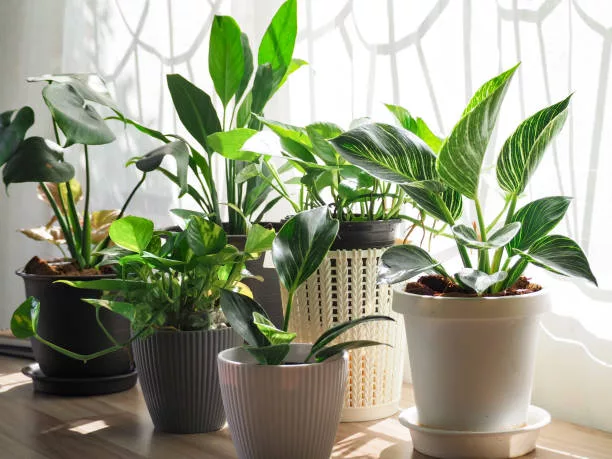Here’s a selection of indoor plants that not only enhance your home’s interior but also boost health and air quality. These plants thrive indoors, require minimal care, and excel at purifying the surrounding air.
1. Jasmine:

Jasmine contains a chemical that alleviates anxiety, enhances mood stability, and promotes better sleep. In larger amounts, it can boost immunity and even heighten libido.
To cultivate jasmine, plant it in well-draining soil within a sunny spot, and feed it weekly with a high potash fertiliser during the summer months. For optimal growth, consider situating it beside a wall or fence in a sunlit area, although jasmine can also thrive in shade, it flourishes best when exposed to full sunlight.
2. Spider Plant:

Spider plants excel at combating formaldehyde, carbon monoxide, and various airborne toxins commonly found in items like paper bags, waxed paper, napkins, plywood paneling, and synthetic fabrics. If your green thumb isn’t fully developed, a spider plant is an ideal choice due to its low maintenance requirements.
Maintaining consistent moisture is key for spider plants—they thrive when neither too dry nor overly wet. They prefer bright to moderate indirect sunlight, avoiding excessive heat that can cause leaf burns (resulting in brown spots). Known for their rapid growth, it’s essential to repot them every other year to accommodate their development.
3. Peace Lily:

Peace lilies serve as excellent home decor, especially during summer when they boast stunning white flowers. However, their appeal goes beyond aesthetics. These houseplants excel in purifying indoor air by effectively absorbing pollutants like ammonia, formaldehyde, and trichloroethylene. They do emit pollen and a floral scent, which might trigger allergies in pollen-sensitive individuals.
When planting peace lilies, opt for soil that retains moisture while drying out gradually over time. Maintaining consistent moisture is essential as these plants don’t respond well to either complete dryness or consistently waterlogged soil, which could lead to root fungus. Consider repotting your peace lily every other year in spring to provide it with fresh soil. As it grows, it may outgrow its pot, becoming dividable, making it beneficial to separate it into smaller sections for optimal growth.
4. Snake Plant:

The snake plant stands out as an ideal bedroom houseplant, renowned for its ability to enhance indoor air quality. It effectively eliminates various toxins such as trichloroethylene, formaldehyde, toluene, benzene, and xylene. For optimal air purification, having multiple plants might be beneficial. Luckily, caring for snake plants is hassle-free, and they thrive in indirect sunlight.
While you can grow these plants from seeds, it typically takes around 3 to 6 weeks to see growth. However, planting them from seeds is a recommended approach. They prefer indirect sunlight but can also adapt well to occasional exposure to direct sun. Snake plants thrive in loose, well-draining potting mixtures, with sandy soil being particularly suitable for their growth.
5. Rosemary:

Rosemary is primarily recognized as an herb renowned for enhancing focus and memory. Its uses extend to relieving muscle discomfort while bolstering the immune and circulatory systems. Additionally, its fresh leaves are a delightful addition to culinary creations.
Throughout their active growth period, it’s crucial to provide consistent yet moderate watering for rosemary plants—avoiding excessive moisture. Typically, they don’t heavily rely on fertilisers; however, if you notice blemishes or stunted growth, a gentle fertiliser application might be beneficial. During winter, cultivating rosemary indoors in a pot and exposing it to ample bright light helps maintain its freshness.
6. English Ivy:

English ivy boasts an impressive ability to eliminate up to 90% of airborne mold, known to trigger allergies, aiding individuals with asthma to breathe easier during sleep, promoting more restful nights. However, it’s vital to note that ivy is toxic if ingested by pets or small children.
Checking the soil moisture before watering is crucial for ivy plants, as they prefer slightly dry conditions over being excessively wet. Whether indoors or outdoors, maintaining consistently moist but not waterlogged soil is optimal for their growth. English ivy thrives in temperatures ranging from 70°F to 90°F, avoiding both harsh winter winds and intense summer heat. Their selective nature makes them quite particular about their environmental conditions.
7. Lavender:

Lavender, whether in plant form or used as a sachet, offers tremendous relief for stress, insomnia, restlessness, nervousness, anxiety, and depression.
For optimal growth, it’s advisable to plant lavender during the warmer months of April or May when the soil naturally warms up. Avoid planting during winter as cold, wet soil can be detrimental to their survival.
While planting them in an outdoor garden is preferable, they also thrive in containers. Lavender plants thrive in sunny locations and may struggle or perish in shaded, damp, or extremely cold conditions. They flourish in dry, fertile soil and might struggle in clay-rich soil environments.
8. Aloe Vera:

Aloe vera is renowned for its incredible healing properties, offering soothing and moisturizing effects on irritated skin. It’s often used to treat various skin conditions like burns, sunburn, frostbite, psoriasis, and even cold sores.
To thrive, aloe vera requires ample bright light. If planted outdoors, providing around 6 hours of sunlight daily is optimal. When grown indoors, positioning it near a window allows the plant to receive sufficient natural light. Aloe vera typically prefers slightly acidic soil with a pH around 6.0, but it demonstrates adaptability to various soil conditions.
9. Golden Pothos:

Golden pothos excels in purifying indoor air by removing chemicals such as trichloromethyl, commonly found in glue, paint, and detergent. It’s incredibly resilient, making it an excellent choice for beginners or those without a green thumb.
In its natural habitat, pothos can grow up to 60 feet tall, but indoors, it typically reaches lengths of about 6-10 feet.
While preferring bright, indirect sunlight, it’s adaptable to varying light conditions, including medium to low light.
Avoid exposing it to intense, direct sunlight, as this can cause leaf burns. Water your pothos approximately every 1-2 weeks, allowing the soil to partially dry out between waterings to ensure the well-being of your plant.
10. Gerbera:

NASA has recently identified Gerbera daisies as the top plant for eliminating benzene from indoor air while also releasing oxygen during the night—an advantageous trait for individuals dealing with insomnia and sleep apnea, as noted by the Lung Institute.
Gerbera daisies thrive in full sunlight, yet excessive heat can be detrimental to their growth. If residing in a particularly hot region, it’s advisable to plant them in areas offering afternoon shade. Weekly watering is necessary, but it’s crucial to do so only when the soil has completely dried out. For those in colder climates, exercising caution to avoid overwatering is essential to maintain the health of Gerbera daisies.
These indoor plants not only add aesthetic value to your home but also contribute to better air quality, improved mood, and various health benefits. Remember to consider your living space, lighting conditions, and the care required before choosing the right plants for your home.










